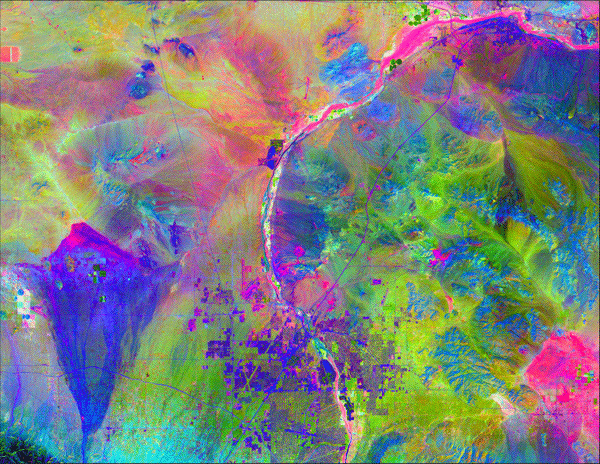Ecology of the Mojave
By Sandra J. Ackerman
Researchers use the principal components transformation to quickly reveal spatial pattern that might not be visible in a true-color composite image.
Researchers use the principal components transformation to quickly reveal spatial pattern that might not be visible in a true-color composite image.

DOI: 10.1511/2015.115.246
This satellite image of the Mojave Desert, near Victorville, CA, owes its brilliant colors to the technique of principal components transformation, which maximizes the contrast among various colors detected by the satellite. With this technique, researchers can quickly reveal spatial patterns—for example, ones of geological features and of vegetation, specifically invasive species, linked to increased frequency of wildfires—that might not be visible in a true-color composite image.

Image courtesy of Pacific Northwest National Laboratory/Jerry Tagestad.
The areas in pink are sparsely vegetated; deep blue and purple show a different geology, dominated by perennial shrubs. Green areas have an abundance of annual forbs and grasses, which are the main driver of wildfire in this desert.
Click "American Scientist" to access home page
American Scientist Comments and Discussion
To discuss our articles or comment on them, please share them and tag American Scientist on social media platforms. Here are links to our profiles on Twitter, Facebook, and LinkedIn.
If we re-share your post, we will moderate comments/discussion following our comments policy.